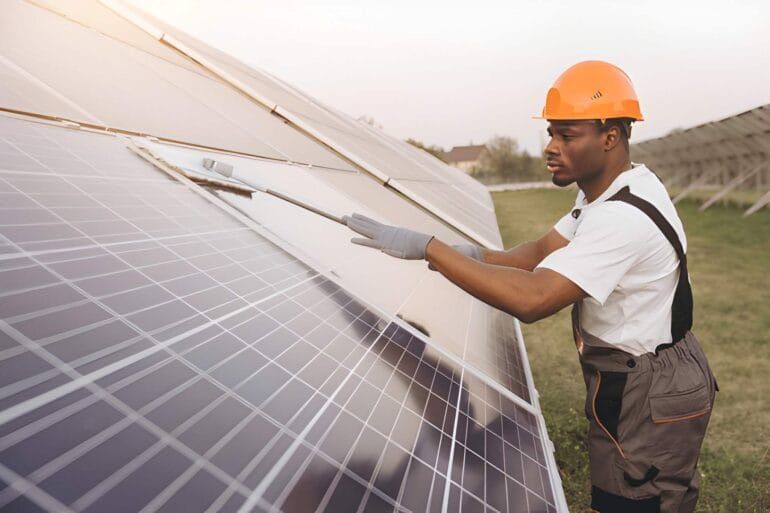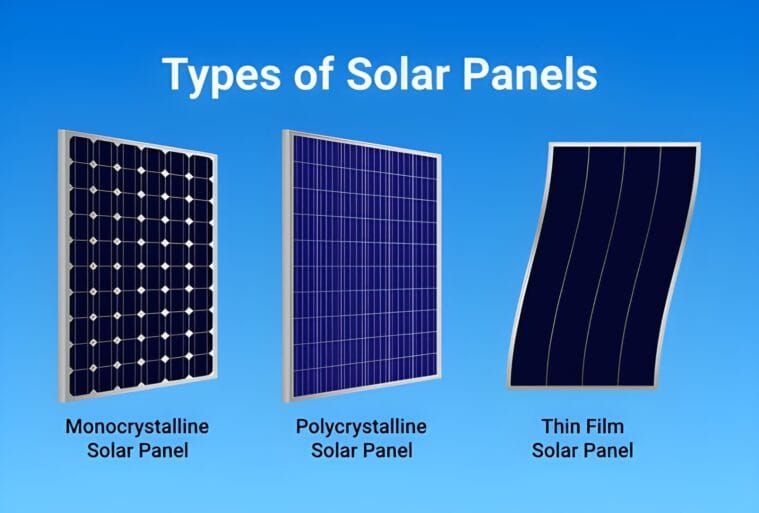Are you finding it hard to keep up with increasing electricity bills? You’re not alone. In 2025, residents and companies in Western Australia are opting for solar energy as an effective way to reduce power bills. With the solar energy rebate WA and accompanying federal and state-level incentives, going solar has never been easier on your wallet.
In this in-depth guide, we will find out how the Western Australian solar rebate can save you up to 70% on your power bills, and also provide a wise investment for your property. From decreased grid dependence to net metering advantages and battery storage integration, let us discover the most significant economic benefits of solar power.
Why Electricity Prices Are Rising in 2025
Australian electricity prices have always gone up because of several urgent issues:
- Elevated electricity demand
- Expensive fossil fuel and coal
- Maintenance and growth of infrastructure
- Increased government tax and environmental charges
Consequently, typical households in WA are today paying between $0.28 and $0.35 for every kWh, resulting in monthly payments that can stretch into the hundreds. And this trend is only likely to pick up. But with the solar energy rebate, there is a pragmatic means of countering that expense.
What is the Solar Energy Rebate?
The solar rebate is an incentive given by the federal and state governments to enable the installation of solar panels at a lower cost. The rebates reduce the initial cost of installing a solar system substantially, making it an investment that is high-return and low-barrier for home owners and businesses.
In 2025, Western Australia has a number of solar energy rebates, which include:
- Federal Small-scale Renewable Energy Scheme (SRES)
- WA Residential Battery Scheme
These rebates make solar power considerably more accessible and cost-effective.
Federal Solar Energy Rebates
The Small-scale Renewable Energy Scheme (SRES) of the federal government is one of the most effective incentives. With this program:
- Homeowners are paid Small-scale Technology Certificates (STCs) according to projected solar output
- Each STC has a monetary value that offsets your overall cost of installation
- The more your system produces, the higher your rebate
This solar rebate energy can fund 20% to 30% of the cost of your system, which means thousands saved.
WA Residential Battery Scheme
The state government of Western Australia joins federal rebates with its own rewarding incentives through the solar energy rebate WA initiative:
- Synergy Customers: $130 per kWh, capped at a maximum of $1,300
- Horizon Power Customers: $380 per kWh, capped at a maximum of $3,800
Other benefits:
- Interest-Free Loans: Up to $10,000 no-interest loans are available for eligible homes, repayable over 10 years
- VPP Ready Systems: Batteries will need to be Virtual Power Plant-ready
- Approved Installers: The installation has to be done by approved installers and retailers such as Easy Solar
With the federal and solar rebate WA programs, homes can save up to 50% of the battery installation cost.
How Solar Power Saves You Money in 2025
1. Less Reliance on the Grid
A properly sized rooftop solar system can supply 60% to 90% of your home’s electricity needs. That means you’re drawing significantly fewer units from the grid, leading to a drastic reduction in monthly power bills. Thanks to the rebate on solar energy, this becomes achievable for many households.
2. Smart Export Guarantee & Net Metering
Under net metering, the excess electricity your system produces is fed back into the grid. You’re credited for every kilowatt-hour, and the credits are subtracted from your electricity bill. This brings bills down to near zero for many consumers.
In 2025, the value of energy sent to the grid keeps increasing, further boosting savings under the energy solar rebate schemes.
3. Protect Against Future Tariff Increases
Prices of electricity fluctuate. But after you install a solar system, your energy bills are predictable. You’re essentially insulated from future price increases—whether they’re driven by fossil fuel inflation or infrastructure upgrades. The initial savings on the solar energy rebate pay off over time through price protection.
4. Battery Storage = Night-Time Savings
Combining solar with battery storage enables you to save surplus energy produced during the day for nighttime or cloudy weather use. With solar rebates covering battery expense, more residences are gaining energy independence.
An integrated battery system aids in optimizing use of your own solar power, with even less grid dependency and lower monthly bills.
5. Quicker Payback and Long-Term ROI
In 2025, the residential systems payback period has fallen as low as 3–5 years. Since solar panels last for 20–25 years, that’s almost two decades of electricity for nothing after your investment is paid back. Your payback period is even shorter with the assistance of a solar energy rebate WA.
Environmental and Economic Benefits

1. Carbon Emission Reduction
Solar energy generates clean, renewable power that does not release destructive greenhouse gases. With each home that makes the switch to solar, the national carbon footprint is reduced.
2. Long-Term Energy Independence
WA residents and businesses are made less dependent on foreign coal and natural gas imports by installing solar panels. Solar captures an unlimited in-state resource—the sun—thus ensuring long-term energy independence.
3. Job Creation and Local Economy Boost
Growing demand for solar systems boosts the domestic economy through the generation of employment in manufacturing, maintenance, and installation. Organizations such as Easy Solar are leading the way in this transition, contributing towards an increasingly green and sustainable economy.
Getting More out of Your Solar with Battery Storage
While solar panels cut down on daytime electrical consumption, battery storage optimises savings by allowing you to utilise stored power during night time or outages.
Owing to the solar energy rebate WA, additional homeowners can today purchase hybrid systems, which:
- Save daytime surplus energy
- Lessen reliance on night-time grid power
- Allow complete home energy protection
This translates to cheaper bills and increased energy security.
Future-Proofing Your Home
1. Greater Property Value
Properties with solar power and battery systems installed are valued higher in the housing market. Buyers are ever-more in search of energy-efficient, future-proofed homes.
2. Enhanced Resilience
Solar panels backed up by battery offer a safety net when the blackout occurs, which is increasingly on our minds with extreme weather and aging infrastructure. This secures your home or business against disruptions from outside.
Common Myths Regarding Solar Energy Rebates
Myth 1: Rebates Are Exclusively for New Homes
Reality: Rebates for new installations are offered on new as well as existing residential homes.
Myth 2: Only Big Systems Qualify
Fact: Even 3kW systems can be eligible for federal and state solar energy rebates.
Myth 3: It’s Too Costly Even with Rebates
Fact: With current low-interest loans and incentives, the majority of WA homeowners can go solar with little or no money down.
Why Act Now? Timing Is Critical
- Rebate Caps: Rebates are capped and available on a first-come, first-served basis
- Price Increases Anticipated: As the demand increases, so can installation and component prices
- Grid Pressures: Delays may result in longer wait times and reduced options
With the solar energy rebate WA, first movers get the greatest economic and environmental advantages.
How to Apply for Solar Energy Rebates in WA
It is easy to apply for solar energy rebates in WA, but you must pay attention to every detail to get the maximum benefit. Begin by making an appointment with a certified provider who can assess your energy requirements, roof suitability, and projected savings. Then select a Clean Energy Council (CEC) accredited installer—this is critical, as only CEC-accredited individuals qualify to work under rebate schemes.
Afterward, make sure the solar system you pick is included on the list of government-approved products for rebates, such as inverters and battery storage if necessary. While the installation is being done, your installer will usually assist with filling out the required applications for both federal and solar energy rebate WA schemes. This entails Small-scale Technology Certificates (STCs) under the scheme of the federal government and claims for battery rebates under WA’s local incentives. By taking this path, you can minimize your upfront expenses and save in the long run.
Conclusion: Be in Control of Your Power Bills in 2025
Increasing energy costs are a problem, but not an insurmountable one. The convergence of state and federally backed solar rebates is an unparalleled opportunity for businesses and residents in Western Australia to spend money on clean, budget-friendly power.
Anything from lowering your grid dependency and monthly expense to enhancing property value and long-term sustainability, solar power is an incredible financial force in 2025.
To begin, it’s critical to work with a reliable provider. Easy Solar, being one of Western Australia’s most reputable solar installers, provides:
- Tailored residential and commercial solar systems
- Battery storage solutions
- Durable inverters and panels from industry leaders
- Installation and after-care service
Make 2025 the year you break free from renting electricity and begin owning it—with the support of solar energy rebate WA offers and Easy Solar’s professional advice.
Ready to cut your electricity bill by up to 70%? Take advantage of the solar energy rebate WA today and let Easy Solar guide your transition to clean, affordable power.







